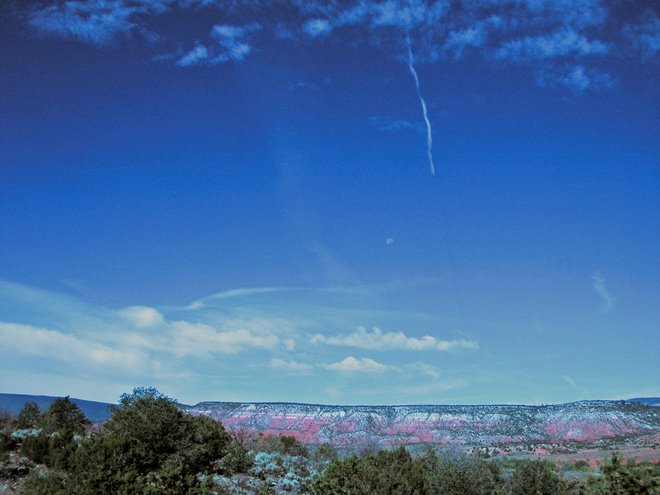S. Kellert: Late adolescents are beginning, to explore a much larger world and challenge that much larger world. They’re very peer-oriented. So doing something in that context can be very very powerful. And I think it was for most of the participants – in part I think because children of that age have always felt that sort of, challenge and exploration of the unknown – especially if they can do it in the company of others. They’re starved for that kind of experience , in our modern urban world. So for many of them it’s a real kind of epiphany – you know it just kind of, one of the most – many of them … , attested to how this was one of the most meaningful experiences in their life and how it really changed them. In a very fundamental way. And, and it did stay with many of them long after, particularly if their experience was, a fairly deep immersion in kind of relatively undisturbed areas. Again, over, at least let’s say a five day week or more, period. A younger age group for them I’m not sure, although there isn’t much data on it, that kind of outdoor challenge experience would be particularly appropriate. And the studies that have been done on middle childhood, and their play outdoors, and how important it is to them – it’s usually fairly mundane outdoors. You know, it’s the “fort” or the little make-believe home they might make in a, in a neighborhood or a backyard place – something that doesn’t look particularly spectacular to an adult but for a kid it might be a world of make-believe and incredible creativity – still within the protective shadow of a home. But venturing out and exploring and sort of creating a sort of a semi-autonomous world. Now for that kid, it’s a different kind of environment
Q: There’s a difference. But our age group,that was what we were told to do. “Go out, get out of the house….”
S. Kellert: Right. Exactly. Or you’d say, “You know, I’ll see you at dinner time.” You know, and it wasn’t much, concern about …..Yeah.
Q: So that, issue is interesting because…. Not my generation but a couple of generations it skipped – these are the parents of the children that are not allowing their kids to do this type of thing.
Q: Are there any signs, other factors, that’s indicate why this happened, besides the use of technology in the home ?
S. Kellert: I think there’s been a lot of things. Just all sort of mutually feeding on this phenomenon you know,…. Certainly we’re a much more urban society than we’ve ever been before. And just urbanization – the traditional, the, the prevailing paradigm of urbanization in our culture has been one of fundamentally transforming, degrading and suppressing nature. That’s just the way in which we’ve gone about it. It doesn’t have to be that way but that’s what we’ve done in our prevailing, sort of approach to urbanization. So the fact that seventy percent of Americans now live in a city, in an urban area, or a standard metropolitan area as they call it, represents that we’ve become increasingly a car culture. There’s, less habitat than there ever was before. Uh, you know, either it’s degraded or less available. Kids time is much more structured than it ever was before. Parents, you know…. Most kids now, play is getting to be a rarer, rather than a normal phenomenon. You know, spontaneous play – that used to be very common. Parents are fearful of letting their kids out alone, especially in the urban areas and that’s a big change. Parents, the extended family network which used to provide a lot of opportunities for kids where they would go with not just parents but with uncles and cousins and so forth – and, in an outdoor, in an outdoor context – and be kind of introduced into and sort of, into various kinds of activities – whether it be fishing or hunting or birding – whatever it might be. That’s uh, diminished uh, as I mentioned before, the role models are just not there the way they used to be and then obviously, the vicarious experience of reality, people want to call it that, the experience of reality second-hand through some sort of representational form, some media uh… most particularly visual media but also books, but, is a much larger part of children’s lives, than the direct experience of reality. And uh… you know, most kids spend an enormous amount of time, I don’t know what the exact figures are, either in front of a television or a computer screen. And … so they’re experiencing reality in a kind of vicarious or representational way, and uh, to a much much greater extent. So you put all those things together and it adds up to a , kind of a, a profound sea change in the way in which children today experience the world compared to just a generation, a very short while ago. A profound change in , a blink of the eye in human evolution. And it seems to be going more and more in that direction.
Q: So what is the power of the natural world, to a child?
S. Kellert: Well ,each age is different. And it’s different, in different kinds of ways, Because it has a lot of different expressions there are emotional development, there’s intellectual development. There’s physical development. And they all have different dimensions to it. But you know, there’s, all sorts of ways in which children engage the world around them and in doing so, facilitate their, their development. Again, physically, emotionally and intellectually.
Subscribe to:
Post Comments (Atom)

No comments:
Post a Comment